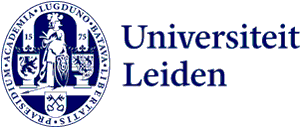
On barriers and bridges: autoimmune rheumatic diseases and the road to a cure
Hans Ulrich Scherer is Professor of Rheumatology, in particular Translational Rheumatology. He wants to build bridges between research and clinical practice and between departments and organisations at home and abroad. Scherer will give his inaugural lecture next Friday. ‘To make progress, we have to build on each other’s strengths.’
What is your research and teaching remit?
‘Translational Rheumatology. Translational is about translating the research to clinical practice. That’s the area I do my scientific work in. I have one foot in the clinic, where I help patients, and the other in a research laboratory, where I supervise researchers. I want to translate the findings from the lab to the clinical practice. And vice versa: to conduct experimental research that meets patient needs. We have to improve our understanding of diseases and the underlying processes if we want to make progress for patients.’
Could you give an example of that?
‘Our current research focuses on autoimmunity, autoimmune rheumatic diseases in particular because autoimmune diseases are common to many medical specialisms. Our research focuses on autoreactive B cells, immune cells that go wrong and target structures in our bodies. We know these B cells are deeply involved in many autoimmune disorders, in the disease onset but also in maintaining the disease process. We have developed a method to detect these rare cells in patient blood. The cells have certain characteristics and the question is how we can positively influence them. We are trying to see if we can do so in translational research. Our research puts us among the top of that field in the world.’
Where do we stand now in treating autoimmune rheumatic diseases?
‘Autoimmune disorders in rheumatology are often chronic still. Patients develop inflammation in their tissues, joints and organs. We have drugs that suppress inflammation but have not yet managed to halt the process. As a result, patients may experience recurrent inflammatory flare-ups. A fear many of them are all too familiar with. And on top of that drugs also have side effects. We want to stop the chronicity of the diseases and move towards a cure. We are close. My ambition is to make significant progress in the next few years.’
Why is this?
‘One reason is that a new therapy, CAR-T cell therapy (link in Dutch), has been studied in Germany in people with an autoimmune rheumatic disease. This involves modifying T cells, another type of cell in our immune system, to identify and eliminate B cells. The patient is more vulnerable for a short while because they lack B cells but the body makes new ones after a few months. The protective immunity previously built up against several diseases, for example after vaccinations, remains unaffected. The results are so successful and hopeful that the whole world is now researching this. This makes for rapid developments. At the LUMC, CAR-T cell therapy is already being used in studies, in lymphoma for example.’
What are the biggest challenges within research on autoimmune rheumatic disorders?
‘You are dealing with rare patients, rare cells and the freshness of the material. The B cells are very sensitive. We would rather not freeze them. You want to have a setup that allows you to obtain the material fresh from the patient and do the analyses at the same time. That is challenging in a lab. And if you want to understand the disease development better, you also have to find patients whose immune system has already been disrupted but who do not yet have symptoms. That is challenging too of course. Another challenge is to find the right funding to use the new, still experimental CAR-T cell therapy in studies. CAR-T cell therapy is still very expensive.
‘At the same time, there are also opportunities. We are looking at how CAR-T cell therapy can be made more affordable in the future. And with the Centre for Human Drug Research in Leiden, we are working on therapeutic antibodies to achieve the same effect as with the CAR-T cells. There are many opportunities and possibilities to roll out therapies in such a way in the future that you will be able to treat more patients better. And determine the right moment for a patient to receive that therapy.’
Your inaugural lecture is titled, ‘Over barrières en bruggen: reumatische auto-immuunziektes op weg naar genezing’ (‘On barriers and bridges: autoimmune rheumatic diseases and the road to a cure’). What bridges do you want to build?
‘First the bridge between research and practice. But young medical students and doctors who want to conduct experimental research also need bridges connecting research and clinical practice. And it takes a lot of collaboration to make progress for patients. For instance, internally with the department of haematology. And externally with other university medical centres and other countries. We have to build on each other’s strengths. These are important bridges we must build.’
Hans Ulrich Scherer’s inaugural lecture is on 21 June 2024 and will be streamed live.
